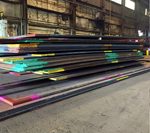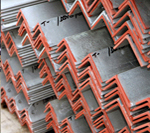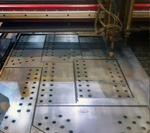
SNYC Steel Fabricators of A36 plate steel Reliable metal fabrication company serving New York City Aluminum, Stainless Steel and carbon steel fabrication professionals for NYC

NYC Metal supplier of galvanized steel, Stainless Steel and Aluminum products NYC Metal Fabricators of Aluminum, Stainless Steel and Galvanized steel products Structural steel and metal products delivered to all 5 boroughs of NYC every day!

Custom steel Fabricators for residential and commercial construction in NY Dependable steel and metal contractors that deliver in all five NYC bouroughs Professional metal fabricators of Aluminum – Stainless steel – carbon steel in NYC

Custom steel Fabricators for NYC Metal Fabricators of Aluminum, Stainless Steel and Carbon steel products for NYC Metal contractors for commercial and residential construction in NY

Structural steel, Galvanized steel, Aluminum and Stainless Steel delivered to NYC every day! Metal suppliers serving New York City and all 5 boroughs for commercial and residential construction.

Steel - Aluminum - Stainless Steel – galvanized steel grating and expanded metal products for NYC Custom steel contractors and metal fabrication experts serving NYC Diamond plate from steel – Aluminum - Stainless steel in NYC

Reliable fabricators of Aluminum, Stainless Steel and carbon steel products for New York Construction. Certified welding and steel fabrication for NYC Expert metal fabricators serving NYC

Steel Fabricators – Metal Fabricators – custom fabrication Steel, Aluminum and Stainless Steel fabricated to specification and delivered to all boroughs of NYC Reliable metal fabrication and supply company in NYC

Custom Steel fabricators of sheet metal and plate products in NYC Residential and commercial construction experts for NYC Experienced metal fabricators of carbon steel, Aluminum and Stainless Steel for NYC



Seth Ravens
GC, NYC
Having heard about Allied Steel NY, we purchased a considerable amount of steel to build a secondary car-parking shed for our company. I had a bad experience with a different steel supplier.
I found Allied Steel NYC and the staff to be very accurate, with an on time delivery of the fabricated steel order. Pricing was highly competitive and I was happy to have received such excellent customer service. We highly recommend Allied Steel of New York City; we now have a new steel supplier local to us in New York City.

Ralph Mannings
Project Manager
We would like to take this opportunity to thank the team of Allied Steel NY for providing the fabricated steel used in constructing our auto workshop. One of the main priorities for this building was the height. The height had to allow for not only the entry of a high van, but also for this van to be raised on a lift in order to access and work on the underneath.
Allied Steel NY provided us everything we needed, all calculations and sizing was absolutely right on the money. All the framing steel was fully galvanized as per our We selected galvanized steel for the minimal amount of maintenance for this building. The overall fabrication work was carried out to a standard befitting a quality Steel Company and its workmanship team is a testament to their overall pride and professionalism.

Sven Jonas
Construction Manager
Allied Steel NYC provided our contractor with quality fabricated steel allowing our project and construction to go quickly and smoothly. Thank your for your honesty and integrity, qualities that are increasingly hard to find in a supply company these days. We would be more than happy to allow any potential clients to visit our project and inspect the quality of the aluminum and steel work. Again thanks to all your team for a great job and we have no hesitation in recommending you to anyone in need of any fabricated metal.

Frank Risignano
Plant Manager
Over the past few years, we have placed a number of orders from the Allied Steel NYC for a number of key projects in Queens NYC, mainly utilizing ASTM A500 & A588 for our cold storage plant located in in Brooklyn, NYC. In order to meet our specific requirements, Allied Steel NYC proved to be the best, especially from cost-effectiveness point of view. The fabricated steel and service provided by Allied Steel was comparatively less in cost as compared other NYC Steel Companies and Fabricators.
It has been of paramount importance to have a great working relationship with a steel company and Allied Steel NYC has become our key steel supplier. Allied Steel NYC continues to prove themselves in an open and honest manner, which benefits this time and time again.

Vincent Reggio
Assistant Plant manager
Our Waste Disposal Plant Long Island City, NYC had been suffering under heavy snow during the last several winters. The old storage shed was a combination of wood and steel and suffered a complete collapse along the rear corner, weakening the rest of the structure.
Having heard great things about Allied Steel NY, decided to seek their assistance in restoring the damaged shed. Our contractor was excited to work with this New York City based steel company, and we went with a modified steel frame engineered to withstand the harshest of conditions including intense snow load.
Our contractor was quite happy as all the material arrived exactly when we needed it, delivered by Allied Steel delivery trucks directly to our Long Island City location, on time, with no issues. Our contractor told us the quality of the steel was excellent and fabricated exactly as were required to achieve both the look and requirement.
I would recommend Allied Steel NYC Steel Fabrication Company to any company who is looking for qualitative, long-lasting and affordable steel products.

John Simmons
VP
It’s truly amazing to witness the evolution Allied Steel New York has gone through over the years and it has been a pleasure of dealing with them.
The business has grown thanks in no small part to their excellent service, as well as an already impressive, yet continually expanding, product range. They have become a key supplier for our projects of steel tube columns, custom pipe supports and steel frames and much more.
Allied Steel’s business strategy and customer service is strategically aligned with ours, they have really helped our company to be more productive; and proactive communication with our Procurement and Site Team has been outstanding, we are happy to have an excellent supply chain partner!

Miles Grebnor
General Contractor
In December 2014, last year, we were commissioned to restore a 5 story commercial building in Queens, NYC. Allied Steel NYC fabricated all the required steel in less than 30 days, delivering the entire order directly to our site. We were extremely happy with the quality of the steel and the pricing was right in line with what we had budgeted.
The customer is “delighted” with the result of the restoration and upgrades and is already moved back into the building.

Steve Fusco
Product Manager
We have been ordering our custom fabricated steel from Allied Steel New York City for years and they continue to be our preferred supplier of Fabricated steel products for most all of our projects.
Allied Steel NYC staff has tirelessly developed a trusted and time served relationship with our Engineering Based Company since we launched our business when we began purchasing small amounts of steel product for projects on Staten Island New York City.
The general engineering industry is a tough business and we are often lumping our suppliers with unreasonable demands for service, price and delivery. Allied Steel NYC always strives to meet these demands and we are continually surprised and impressed with the flexibility and customer service.

Russel
Project Manager
Manhattan NYC
If you require general sheet metal work, medium plate, or steel fabrication in Manhattan, NYC, look no further than Allied Steel New York City. As a metal fabrication company specializing in a variety of steel-related products, we work closely with them to meet all our requirements. We service a variety of industries, as well as government agencies and can depend on Allied getting the order right and delivered fast.
As a steel fabricator, Allied Steel has provided us with custom structural steel fabrication and metal. Allied Steel has a solution to meet your specific requirements.

Donald Peterson
Project Foreman
NYC
We contracted with Allied Steel NYC as key supplier in order to complete our 4 large construction projects in Brooklyn. This installation required custom metal bending with sizes ranging from quarter inch up to three quarter inch thick, in addition to sheet metal fabrication of stainless steel and aluminum products. The custom fabricated plates and formed stainless steel and Aluminum pieces were fabricated promptly and correctly. Allied Steel NY made the job much easier with their reliable service and quality products, better than any other steel fabricators we used in the past and also made deliveries outside of normal business hours. The quality work is reliable, long-lasting and the special deliveries provided greater flexibility for our project.
My experience with Allied Steel New York City as the supplier of this steel products is highly recommended in terms of cost and quality.

Steven Meyer
VP
Dealing with custom Fabricated Steel orders form Allied Steel NYC has been nothing but a pleasure. From on time delivery directly to our site, care and precise specs they have been very reliable with quality of the fabricated steel products never compromised. We awarded Allied Steel NY the contract to supply structural steel for the strip mall project in the Bronx, NYC, worth over a half million dollars. Allied Steel NY provided a quality team that we were in constant contact with. Their quality workmanship helped us to keep the project on track of its tight schedule set by the owner. They have consistently met our guidelines and proved their dedication to their customers for a complex project, combined with the busy site, and a fast tracked schedule.

Matthew Perla
General Manager
SVP
We chose Allied Steel as our key supplier for our upcoming project after touring the metal/steel manufacturing facility. I am pleased to say everything I was told was true. Our order was delivered exactly as described, within the delivery window they gave us. We have since switched to Allied Steel NYC for all our projects, big or small. Allied has always delivered each and every time and I would highly recommend them for any steel based project in any of the five NYC boroughs.
At Allied Steel, we try our best to keep our contractors aware of the type of products we work with. Our quality steel products are available in a wide range of different steel grades. To better facilitate customers regarding the types of steel grades that we offer, we have compiled a list of frequently asked questions.
The A36 steel is one of our more popular steel grades. It is a standard carbon alloy steel that is mainly designed for use in structural projects. The ASTM International organization is responsible for designating the official standard A36. This specification is applicable to all international as well as domestic Carbon steel plates and structural shapes , including channels, angles as well as bars. This type of steel is also commonly used in beams that are riveted or welded for construction purposes. Many times, beams are bolted together for use in the construction of bridges , buildings or for other structural projects. The A36 specification creates a requirement for a specific chemical composition as well as specific mechanical properties that must be met.
Some of the main elements used in the composition of this type of steel are carbon , manganese , copper , nickel , chromium , sulfur , phosphorus as well as vanadium . During the manufacturing process, these elements are heated to more than 3,000 degrees Fahrenheit with undiluted oxygen. The mechanical yield strength is approximately 36,000 psi , whereas the yield and tensile strength ranges between 58,000 to 80,000 psi . These properties remain consistent at temperatures as high as 650 degrees Fahrenheit. Currently, our A36 steel is used commonly throughout New York City and its five boroughs for structural construction purposes.
The A572 is essentially a standard high steel strength, low alloy structural steel that includes some additional elements that combine to increase its yield and tensile strength . The ASTM International designated the official standard for this steel grade: A572. This applies to all international and domestic carbon steel plates as well as Structural shapes , including bars, angles, channels and beams ,which are welded , riveted or even bolted together for use in larger construction projects such as building bridges , construction of skyscrapers, etc.
The primary elements used in the manufacture of the ASTM A572 steel grade include carbon and manganese . Other elements that are added during the manufacturing phase include chromium , nickel ,silicon , copper , phosphorus , sulfur , vanadium and titanium . During the manufacturing process, the elements are heated to a temperature higher than 3,000 degrees Fahrenheit. The mechanical properties of this steel grade are found by creating a combination of one of the five different grade specifications, commonly including 60, 65, 42, 50 and 55. The grade designation relates directly to the requirements pertaining to the minimum yield strength . The A572- G50 requires a yield strength of at least 50,000 psi and a tensile strength of at least 65,000 psi . These properties remain consistent up till 650 degrees Fahrenheit.
The ASTM A709 steel is a high strength, low alloy structural steel type which includes additional elements that add up to enhance its yield strength , as well as tensile strength. The main standard A709 was designed by the ASTM International organization. This specification is applicable to all domestic carbon steel plates commonly welded , riveted or even bolted for use in many large-scale bridge construction projects.
The ASTM A709 must also pass an impact test, which is known as the Charpy V-Notch test. This is important for testing the non- fracture and fracture critical properties of the steel. The primary elements used in the manufacture of ASTM A709 include carbon, manganese , silicon, sulfur, nickel, chromium, titanium, vanadium and niobium. These elements are brought together and heated to temperatures higher than 3000 degrees Fahrenheit.
The mechanical properties of the ASTM A709 are identified by creating a combination of the seven different specifications, namely the HPS 50W, the HPS 70W, 36, 50, 50S and the HPS 100W. The specification of the steel relates directly to the requirements of its minimum yield strength.
For instance, the A709- G50 requires a yield strength of at least 50,000 psi and a tensile strength of at least 65,000 psi. The W mentioned in the grade denotes a higher resistance to corrosion, mainly because of greater corrosion resistant elements such as copper. The mechanical properties remain consistent up till 650 degrees Fahrenheit.
The A588 is a high strength, low alloy structural steel that is commonly used in all varieties of international and domestic steel plates and structural steel products including beams, channels or angle bars that are riveted, welded or bolted for use in the construction of bridges or buildings. The designation for this steel standard is given by the ASTM international organization. The steel has added elements that enhance its yield and tensile strength, making it more robust.
This type of steel is also known as weathering steel and is highly resistant to weather elements, as well as corrosion. This steel grade is similar and also referred to as Corten steel a registered trademark of USS Corporation. Compared to other steel grades, the ASTM A588 is much better when it comes to resisting corrosion or withstanding weather elements, primarily because of its chemical composition. The steel was originally manufactured in order to remove a need for painting (it can be installed bare or without any coating). Moreover, since it can easily withstand damaging weather conditions, it is very low maintenance. The main elements that are used in the manufacture of the ASTM A588 steel grade include phosphorus, silicon, copper, carbon, manganese, niobium, molybdenum, vanadium, nickel and sulfur. This grade steel has a yield strength of at least 50,000 psi and a minimum tensile strength of 65,000 psi.
The A992 steel is a carbon steel alloy that is primarily employed in structural construction projects. The official standard is designated by the ASTM International organization. In the past few years, the ASTM A992 has been used in place of the older standard A36 or A572- 50. This specification is applicable to all foreign or domestic carbon steel plates, beams, channels and I- beams that are welded, bolted or riveted for use for use in heavier construction projects such as buildings or bridges, where higher structural steel strength is a prime requisite.
The primary elements used in the manufacture of this steel grade include sulfur, silicon, copper, manganese, phosphorus, carbon, chromium, nickel, vanadium and titanium. The mechanical properties of this steel grade remain consistent up till 650 degrees Fahrenheit with a minimum tensile strength of 65,000 psi and a minimum yield strength of 50,000 psi.
The A514 Steel is a high strength alloy steel that can easily be tempered, making it an excellent choice for welding. It is also commonly referred to as T-1 Steel and is trademarked by one of the world’s largest steel manufacturers, ArcelorMittal Corporation. The low carbon steel grade is commonly used in construction applications where high strength and low weights are required. Common applications include bridge frames, truck frames, cranes, architectural buildings and even parts of machinery that have to withstand high wear and tear impact as well as abrasion. For instance, this steel grade is used in excavating machinery. The standard specification and composition of this type of steel, are imposed by the ASTM International Organization. The yield strength of this steel grade is quite high, with a minimum yield strength of 100,000 psi and a tensile strength that ranges between 110,000 and 130,000 psi.
The A500 Steel grade is commonly used for cold- form welding and in seamless structural tubing. The mechanical properties and the chemical composition were determined by the ASTM International Organization and were applicable to all foreign and domestic steel variants. This steel grade is commonly used for frames, supports, roll cages as well as structural columns. There are four different grade levels that are used, based upon their strength requirements. For instance, round, square or rectangular tubing have different requirements. The main elements used in the manufacture of this type of steel include carbon, manganese, copper, sulfur and phosphorus. The yield strength of the rectangular and square tubing ranges between 46,000 and 50,000 psi, whereas the tensile strengths vary between 58,000 and 62,000 psi.
The AR400 Steel is extremely hard and durable. It can easily withstand heavy impacts and abrasion. The initials “AR” stand for “abrasion resistant.” Compared to standard carbon steel, this high strength low alloy grade steel is much harder. According to the Brinell scale, it has a hardness range of 360- 440 BHN. The chemical composition of this steel grade is a medium carbon. It is a mixture of low alloy and several important elements such as chromium, manganese, molybdenum as well as nickel. Tempering and quenching are used in order to combine these elements together and make this steel grade more resistant to impacts.
It is widely used in excavating machinery, as well as mining equipment. The AR400 has a minimum tensile strength of approximately 180,000 psi whereas the minimum yield strength is approximately 155,000 psi. One of the key features of this highly durable steel is the fact that it maintains its mechanical properties even at very high temperatures. However, this makes it difficult to bend the steel at very high temperatures too. Due to its fracture toughness and inability to bend, it is not recommended for use in structural steel applications.
The Corten steel is commonly referred to as i weathering steel. Since it is resistant to atmospheric weather conditions, the steel is commonly used in external conditions. The material was given a grade by the ASTM international, even though the term “Corten” is trademarked by the United States Steel Corporation. The closest grade that can be compared to this is the ASTM A588.
The high strength low alloy steel has significantly enhanced mechanical properties and is more resistant to weather conditions than the common standard carbon steel. The yield strengths vary between 36,000 to 86,000 psi, whereas the tensile strengths generally vary between 60,000 and 100,000 psi. High strength low alloy steel is different from conventional steel grades simply because they are tailor- made for specific mechanical properties.
The carbon content varies between 0.05 and 0.25%. The other elements added during the manufacturing process include titanium, vanadium, chromium, niobium, manganese, nickel and copper. These elements can alter the micro- structure of the steel and create a very smooth distribution of the alloy carbides. All of this results in a stronger material. This steel is used for producing car parts and truck parts.
There are many types of structural steel. Most of these are made for specific purposes, with tailored mechanical and chemical properties that are overseen by the ASTM International Organization. Some of the common structural steel shapes include I beams, angles, angle iron, c channel, flat bar, squares as well as square and rectangular structural tubing. These structural steel products are made according to standard dimensions and are usually bolted or welded together for use in building or bridge construction. They are also used in the manufacture of heavy machinery since structural steel has greater strength as compared to common steel grades.
The A36 Steel grade is very commonly used for general construction purposes. It is a structural quality steel that is malleable and quite durable.
The A572- 50 steel grade is a high strength low alloy steel that is extremely popular in applications where higher strength is a requirement. Heavy construction applications generally employ this steel grade.
The A709- 50 steel grade is another high strength low alloy steel with an AASHTO specification. It is commonly used in building bridges as well as in heavy construction applications.
The A992 steel grade is a specification for structural steel beams. This type of steel grade is most commonly used in the construction of large-scale buildings, where higher tensile and yield strengths are a major requirement.
Rebar is essentially a round carbon steel that has a patterned surface. There are raised ridges on the surface which makes it easier to grip and stick well to masonry concrete. Since concrete tends to expand or contract based on the external temperature, it requires a type of steel that also expands and contracts at a similar rate. That’s why rebar is used for reinforcement (the two stick together very well, creating a reinforced structure). When rebar is added in the middle of a poured concrete structure, it can increase the stability of the structure and helps to normalize the force loads after the concrete has hardened. Another way that rebar is used is when it is made into a wire mesh. The wire mesh sheets are commonly used in tandem with applications where poured concrete is used. For instance, wire mesh sheets are commonly used in the building of pavements, where additional stability and enhanced strength are both very important.
A diamond plate is also commonly referred to as a checker plate, floor plate or a safety plate. It is a flat metal plate that has raised ridges or a pattern of elongated diamonds on the surface. The diamond plate is generally made of aluminum, stainless steel or carbon steel. Depending upon the type of manufacture, the design of the raised pattern may vary. The raised pattern is a distinguishing feature since it provides additional grip and prevents slipping. These tread plates are commonly installed on walkways, stair treads, platforms and are also used widely in flooring applications in several industries. Nowadays, the raised texture also has design implications: it is used as wall panels and in architectural façade panels to create a unique outlook.
If you have another question that you cannot find the answer to, our expert engineers will be glad to help you. Simply fill out the given form, including the question and we will get back to you as soon as we can. Allied Steel prides itself on its customer service. Being a responsive steel company, we will try to answer your question in as little time as possible. We hope this FAQ guide was helpful.

 (212) 709-8123
(212) 709-8123